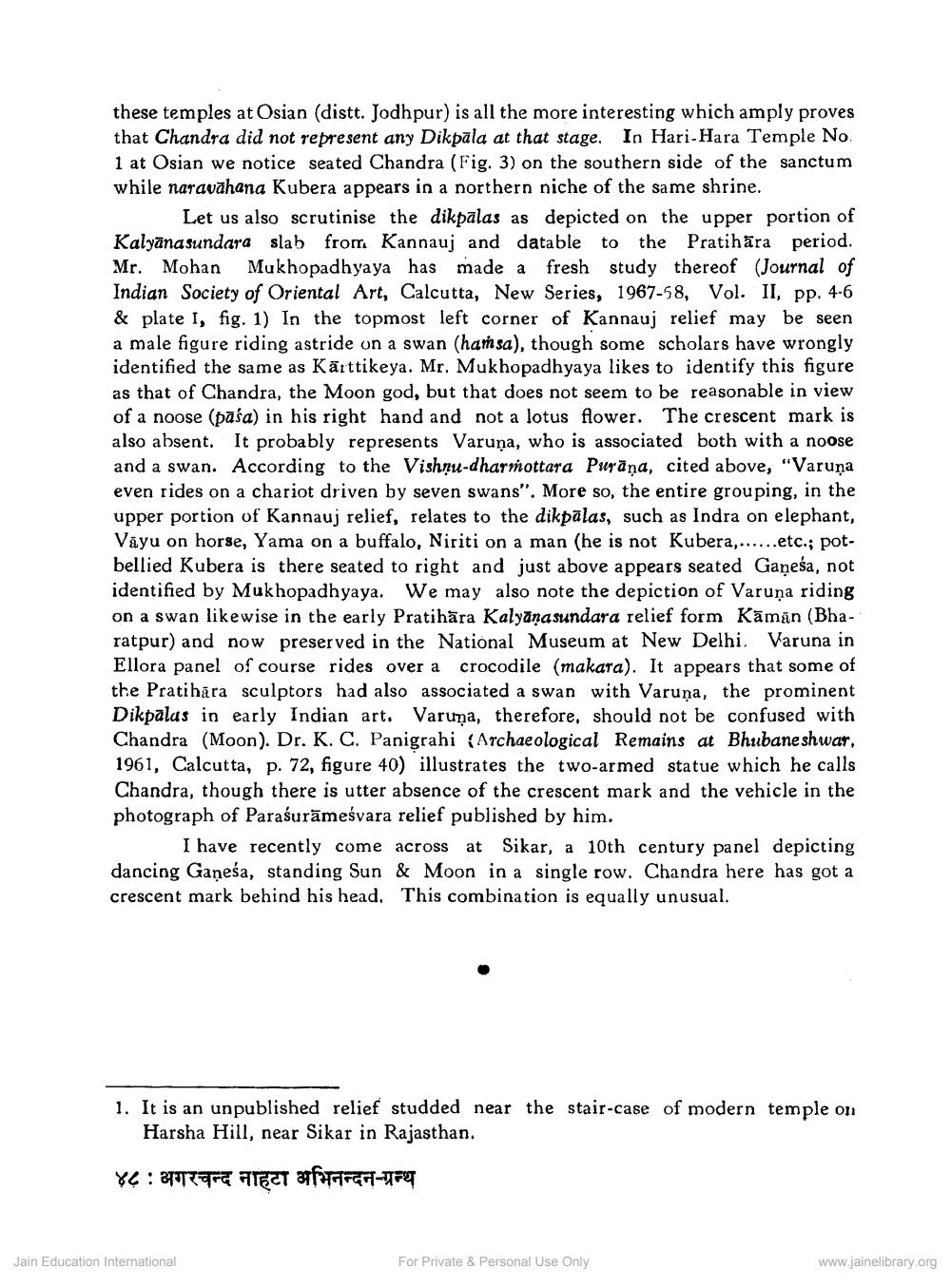________________
these temples at Osian (distt. Jodhpur) is all the more interesting which amply proves that Chandra did not represent any Dikpāla at that stage. In Hari-Hara Temple No. 1 at Osian we notice seated Chandra (Fig. 3) on the southern side of the sanctum while naravāhana Kubera appears in a northern niche of the same shrine.
Let us also scrutinise the dikpalas as depicted on the upper portion of Kalyanasundara slab from Kannauj and datable to the Pratihāra period. Mr. Mohan Mukhopadhyaya has made a fresh study thereof (Journal of Indian Society of Oriental Art, Calcutta, New Series, 1967-58, Vol. II, pp. 4-6 & plate I, fig. 1) In the topmost left corner of Kannauj relief may be seen a male figure riding astride on a swan (hamsa), though some scholars have wrongly identified the same as Kärttikeya. Mr. Mukhopadhyaya likes to identify this figure as that of Chandra, the Moon god, but that does not seem to be reasonable in view of a noose (pasa) in his right hand and not a lotus flower. The crescent mark is also absent. It probably represents Varuņa, who is associated both with a noose and a swan. According to the Vishnu-dharmottara Purāna, cited above, "Varuņa even rides on a chariot driven by seven swans". More so, the entire grouping, in the upper portion of Kannauj relief, relates to the dikpalas, such as Indra on elephant, Vāyu on horse, Yama on a buffalo, Niriti on a man (he is not Kubera,... ...etc.; potbellied Kubera is there seated to right and just above appears seated Gaņeśa, not identified by Mukhopadhyaya. We may also note the depiction of Varuņa riding on a swan likewise in the early Pratihāra Kalyanasundara relief form Kāmān (Bharatpur) and now preserved in the National Museum at New Delhi. Varuna in Ellora panel of course rides over a crocodile (makara). It appears that some of the Pratihāra sculptors had also associated a swan with Varuņa, the prominent Dikpalas in early Indian art. Varuņa, therefore, should not be confused with Chandra (Moon). Dr. K. C. Panigrahi (Archaeological Remains at Bhubaneshwar, 1961, Calcutta, p. 72, figure 40) illustrates the two-armed statue which he calls Chandra, though there is utter absence of the crescent mark and the vehicle in the photograph of Paraśurāmeśvara relief published by him.
I have recently come across at Sikar, a 10th century panel depicting dancing Ganesa, standing Sun & Moon in a single row. Chandra here has got a crescent mark behind his head. This combination is equally unusual.
1. It is an unpublished relief studded near the stair-case of modern temple on
Harsha Hill, near Sikar in Rajasthan.
४८ : अगरचन्द नाहटा अभिनन्दन-ग्रन्थ
Jain Education International
For Private & Personal Use Only
www.jainelibrary.org




